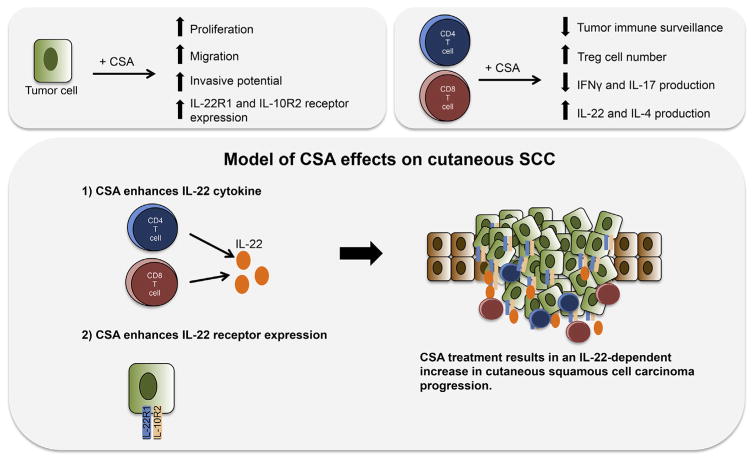Fig. 7.
Model of cyclosporine effects on cutaneous SCC. It is possible that CSA acts through the IL-22 axis to drive aggressive behavior by SCC. CSA treatment promotes SCC growth, invasive capacity, and IL-22 receptor expression. The authors have previously shown that IL-22 treatment promotes SCC growth. In addition to decreased tumor immune surveillance, CSA treatment enhances Treg numbers and IL-22 production by CD4+ and CD8+ T cells. Therefore, higher IL-22 receptor expression on SCC tumor cells and increased levels of IL-22 cytokine produced by CD8+ and CD4+ T cells may contribute to tumor growth.

